If the engine overheats during operation or slowly warms up to operating temperature, check the thermostat
To check the thermostat on the car, start the engine and feel the lower radiator hose with your hand. It must be cold.
After the coolant temperature reaches 87–92 °C, the hose should begin to heat up, this indicates that the coolant has begun to circulate through the radiator.
If this does not happen, you need to remove the thermostat and check its operation.
Preparing the car for work.
Drain the coolant (see the article - Checking and replacing the Nissan Almera engine coolant)
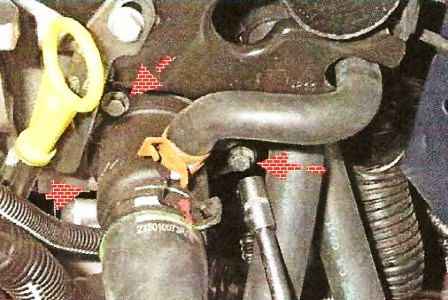
Without removing the hoses from the nozzles of the thermostat cover, with a 10 head, unscrew the three bolts securing the thermostat cover
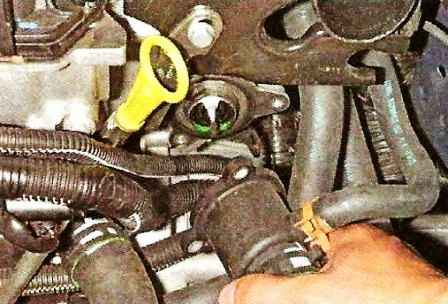
Remove the cover together with the hoses from the thermostat housing

Remove the thermostat from the housing
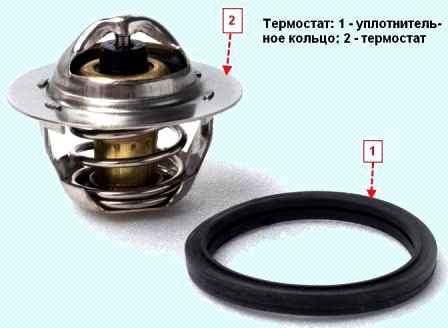
The thermostat connection is sealed with a rubber gasket.
To test the thermostat, dip it into a vessel of water.
We heat the vessel and control the beginning of the valve opening with a thermometer.
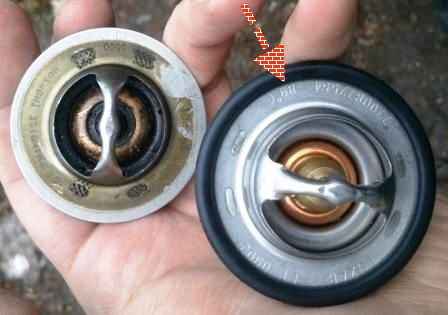
The valve stem should begin to retract at 89˚ C, indicated by the number 89 on the thermostat flange
At a temperature of 95±2˚ C, the valve must open fully - the stroke of the stem must be at least 8 mm.
Install the thermostat in reverse order.
Add the coolant to the norm and check the tightness.
Removing the thermostat housing
The thermostat housing is removed when the engine is overhauled or when a leak appears between the head and the flange of the thermostat housing.
Draining the coolant (see article - Check and replacing the engine coolant Nissan Almera)

Remove the air intake and resonator

We remove the cooling system hoses from the holder 1, fixed on the bracket 2
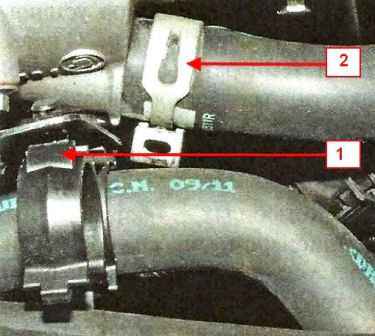
Remove the holder 1 of the cooling system hoses from the bracket holes.
Squeezing the ends of clamp 2, slide the clamp along the hose and remove the heater hose from the thermostat housing nozzle
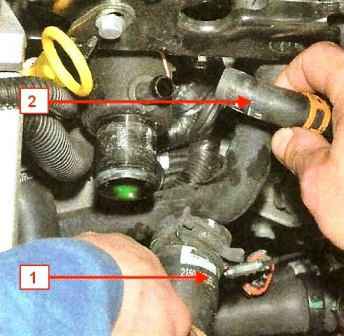
We also disconnect the inlet hose 1 of the radiator and steam outlet from the nozzles of the thermostat cover Inlet hose 2.
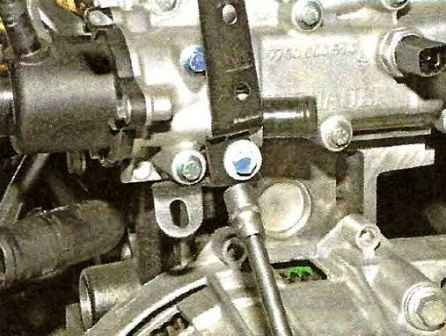
With a 10 head, unscrew the bolt securing the hose holder bracket

Remove the bracket

With a head of 8, unscrew the nine bolts securing the thermostat housing to the cylinder head
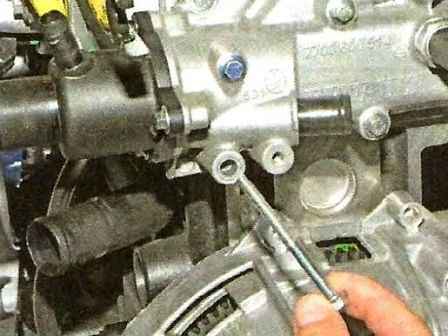
The thermostat housing front lower mounting bolt is the longest of the nine bolts
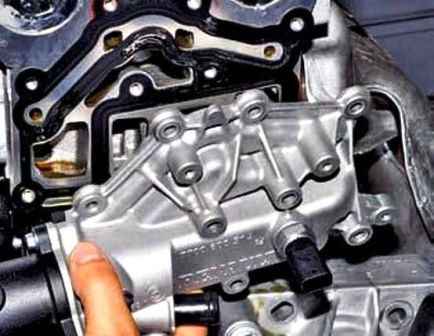
Remove the thermostat housing
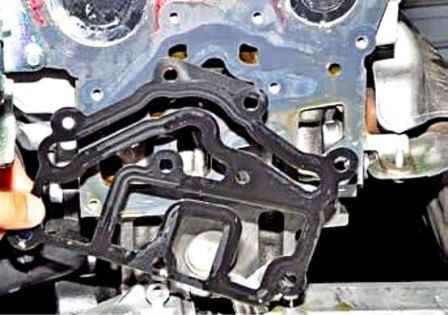
Remove the gasket
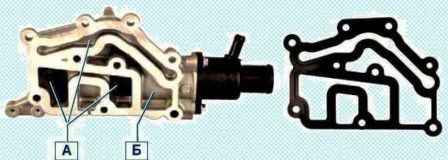
The body and gasket have cavities for oil and coolant
We install a new gasket and tighten the bolts in the sequence shown in Figure 7. The tightening torque is 10 Nm.
Fill coolant.
The coolant level should be above the min mark (about halfway between min and max).
Checking the operation of the thermostat.
Start the engine and set the rpm to about 1500 -1.
The upper radiator hose should be hot when the thermostat is activated.
We monitor the engine temperature readings.
If the radiator fan is running and the upper radiator hose is hot, this indicates that our thermostat has opened.
Check the coolant level again.





